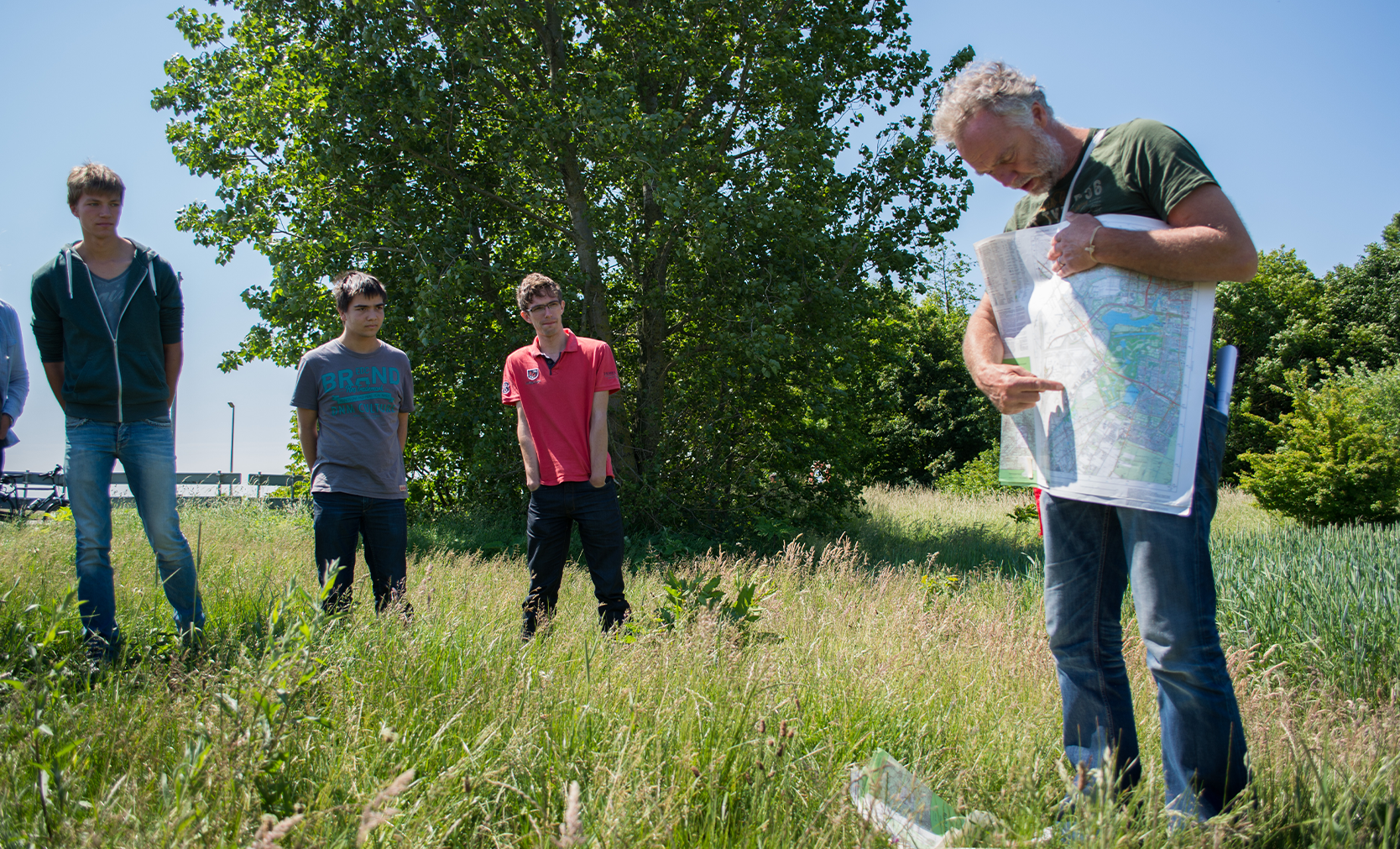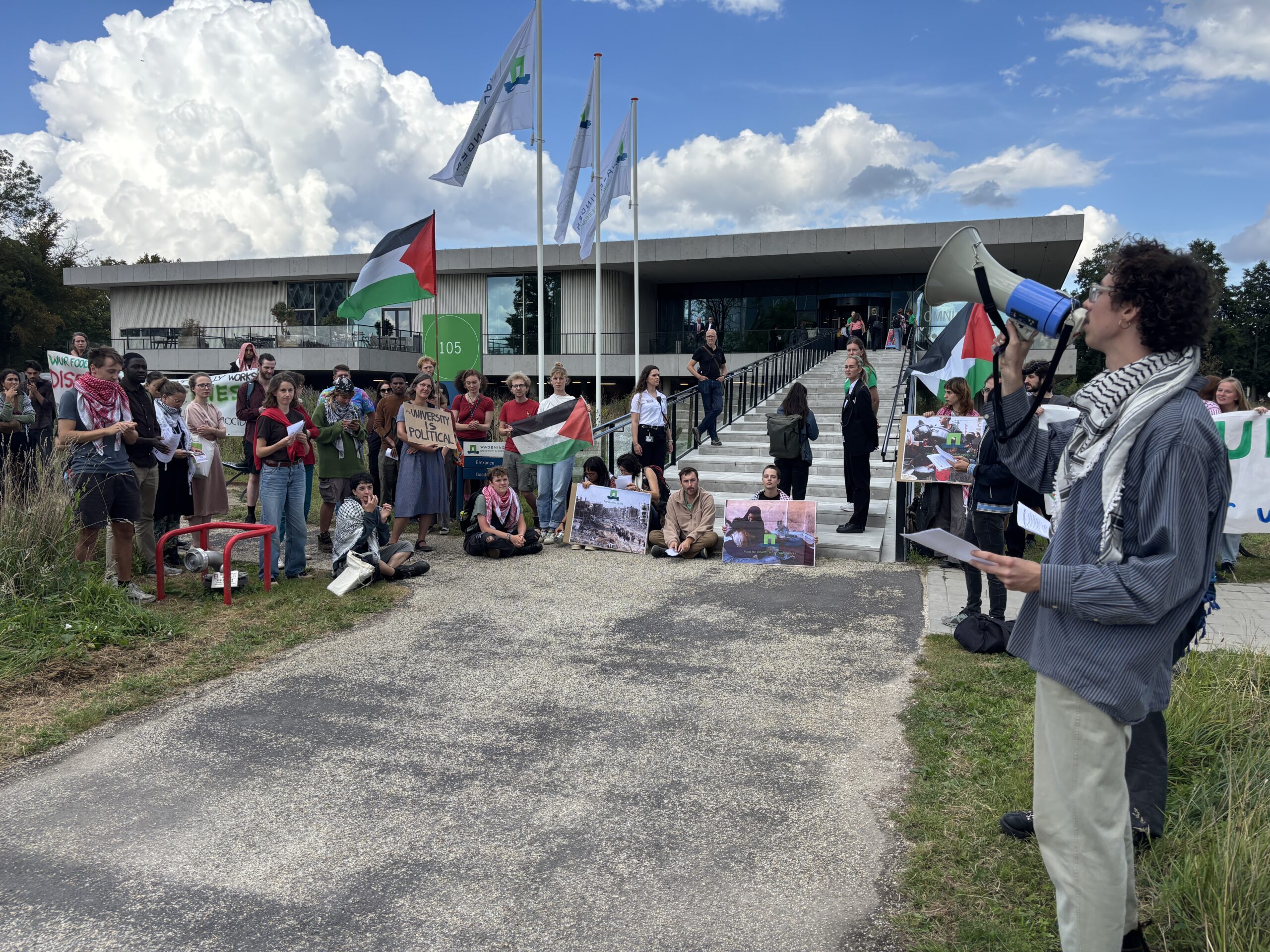The education side will have to contribute 7.3 million euros to the structural cuts of 80 million euros that WUR needs to make as of 2028. The chemistry lecturer Marga van Voorthuizen wonders if there is sufficient awareness of the cumulative effect on teachers, who are facing challenges on various fronts.
Marga van Voorthuizen works in the Physical Chemistry and Soft Matter department. She teaches the basic chemistry courses that are compulsory for all WUR students doing science degrees. ‘There are five of us teaching three basic courses; we jointly have about 3 FTEs for that, with 0.8 for me personally. That will soon change because I discovered last summer that my contract won’t be renewed. Because of the financial situation, our chairholder was unable to renew my temporary contract this year. Now my colleagues will have to figure out a way to keep all the practicals going, even though everyone is already really busy.’
While the news about her contract was obviously a blow for Van Voorthuizen, she is now mainly concerned about the cumulative effect these cuts will have. ‘Departments are having to terminate temporary contracts and deal with the shortfall by deploying researchers and other support staff. That means there is less time available for securing research grants. Which indirectly leads to even less revenue for the department. At the same time, degree programme staff are looking more critically at how much money should be spent on a course. On top of this there is the effect of falling student numbers.’
Van Voorthuizen expects the cuts to lead to an increasing workload and work pressure. ‘I already see that among my fellow teachers who are being kept on. Throughout WUR, our dedicated teachers will have to work even harder to maintain the same quality of teaching, resulting in greater work pressure. Sooner or later, that is going to hurt them.’
Developing the education
‘In addition, since I was appointed in August 2023, we have had more scope to develop the education further. We not only gave classes, we also worked on updating the teaching materials and methods and thought about what knowledge and skills students need for the various degree programmes. We looked for new methods for conveying our knowledge efficiently too and we improved ways of testing students. If a practical activity no longer met the needs of the programmes, we considered alternative activities or improvements to an existing experiment. I wonder whether there will still be enough time for that next year.’
Our dedicated teachers will work even harder to maintain the same quality
Fortunately, Van Voorthuizen’s personal situation was resolved in the end. ‘WUR was looking for a study adviser for the new Bachelor’s programme Data Science for Global Challenges and the associated Master’s, which has already been going for three years. I was able start on that from 1 May, with a permanent contract.’
Dean of Education Arnold Bregt understands teachers’ concerns. He can’t deny that the problems teaching staff are experiencing are real, but he explains the cuts WUR has to make are not the main culprit. ‘Only 7.3 million of the 80 million euros in structural cuts that WUR will have to make as of 2028 will be borne by the education side. The cuts are divided into four categories: teaching, teaching support, teaching facilities and buildings such as Aurora, and student facilities. The first category (teaching) will account for the smallest percentage, about 2.6 per cent, which is a bit over two million euros per year. The other categories will account for double that percentage. We are sparing the primary teaching process as much as possible.’
Student numbers
According to Bregt, the falling student numbers are a more important factor financially. ‘Those numbers have been falling for some years but we are only starting to notice the effects now.’ WUR gets 15,000 euros a year per student for education. That money is used to pay for the hours staff spend teaching. The fewer students, the less money for this. Bregt: ‘At the moment, preliminary registrations for Bachelor’s degrees are ten per cent down on last year. Broadly speaking, that will cost us two million euros. Which is as much as the education side will lose due to WUR’s cutbacks.’
‘Income from research funding is also falling,’ continues Bregt. ‘Many chair groups combine the money from research funding and teaching income. If the one source generates less revenue, they compensate for that with the other source. It means staff barely notice this in their daily work. Now that both income sources are facing cuts, we are finally seeing problems, for example because there is no longer any money for appointments.’
Bregt is keen to put this into perspective, though. ‘The ten per cent drop with respect to last year corresponds to about 150 students. The Netherlands has 640 secondary schools. If a quarter of those schools each has one extra pupil choosing Wageningen, we would be back up to where we were last year.’
Work pressure
‘I share Marga’s concerns,’ says Eva Meijer, a teacher and member of WUR Council. ‘Although the cuts haven’t yet really been implemented, I can see they are already having an effect on the work pressure. Even the fact that we know we will soon have to do the same amount of teaching with fewer staff is causing stress among my colleagues. Also, an investigation by the Labour Inspectorate showed the pressure of work among teaching staff is structurally too high anyway. WUR Council wants teachers to have more of a say at the university, including on policy at the preparation stage. Teachers have an important perspective on such topics as work pressure, development possibilities and renewing the education. Over the next while, we will keep a close eye on what is going on with teachers and how they experience the cuts.’

 Teachers are worried whether there will be enough time in future for educational improvements, such as tailoring practical activities and experiments to the course needs. Photo Marte Hofsteenge.
Teachers are worried whether there will be enough time in future for educational improvements, such as tailoring practical activities and experiments to the course needs. Photo Marte Hofsteenge. 

![[Seriously?] Research jobs to fall by a quarter due to more personal research](https://www.resource-online.nl/app/uploads/2025/07/WEB_DeNeus.png)